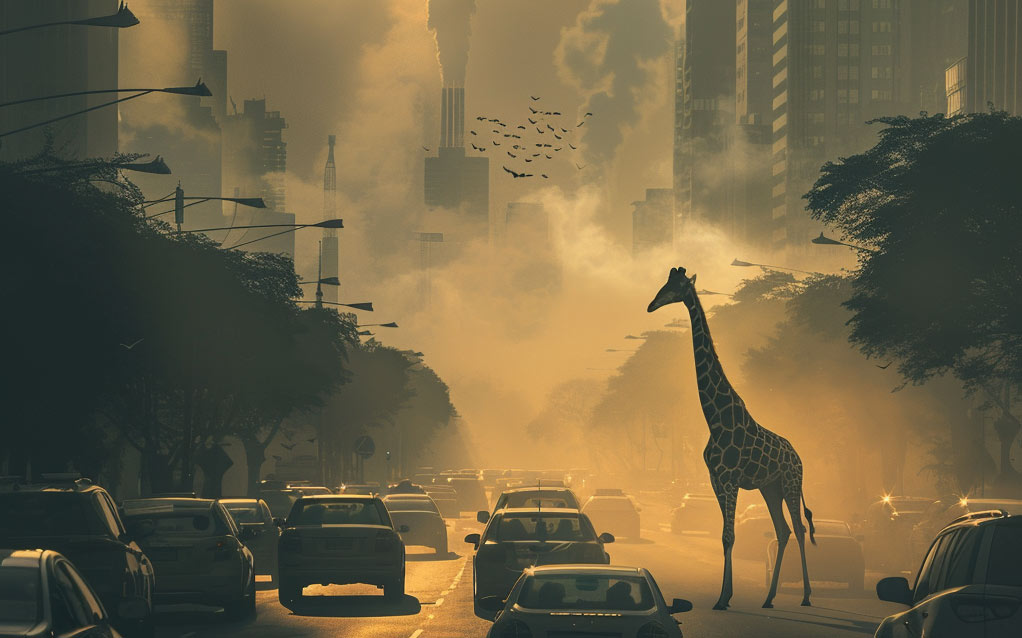
Health Impacts on Urban Wildlife
Poor air quality can have severe health effects on urban wildlife. Animals, like humans, breathe in pollutants that can cause respiratory issues. Birds, for example, are highly susceptible to air pollution due to their efficient respiratory systems. Pollutants such as ozone, sulfur dioxide, and nitrogen oxides can damage their respiratory tissues, leading to reduced lung function and increased susceptibility to diseases.
Small mammals, such as squirrels and bats, are also affected by air pollution. Particulate matter can accumulate in their respiratory systems, causing inflammation and other health problems. Prolonged exposure to polluted air can weaken their immune systems, making them more vulnerable to infections and diseases.
Behavioral Changes
Air pollution can also lead to behavioral changes in urban wildlife. Animals may alter their feeding, mating, and migration patterns in response to poor air quality. Birds, for example, may change their song patterns or vocalizations to communicate more effectively in noisy and polluted environments. These changes can affect their ability to find mates and reproduce successfully.
Pollution can disrupt the natural behaviors of other animals as well. For instance, nocturnal animals like bats may alter their activity patterns due to light pollution and changes in air quality. These disruptions can have cascading effects on the ecosystem, impacting predator-prey relationships and overall biodiversity.
Habitat Degradation
Air pollution contributes to habitat degradation in urban areas. Pollutants can settle on plants and soil, affecting the quality of the habitats that wildlife depends on. Acid rain, caused by sulfur dioxide and nitrogen oxides, can damage vegetation and reduce the availability of food for herbivores. Contaminated water sources can also pose a threat to animals that rely on them for drinking and bathing.
Habitat degradation reduces the availability of safe and healthy environments for urban wildlife. As natural habitats are compromised, animals may be forced to move to less suitable areas, increasing competition for resources and leading to further stress on the population.
Bioaccumulation and Biomagnification
Pollutants can accumulate in the bodies of animals, a process known as bioaccumulation. This can have serious consequences for urban wildlife, especially for those at the top of the food chain. Predatory birds, such as hawks and owls, may ingest prey that has accumulated pollutants, leading to biomagnification. This means that the concentration of pollutants increases as it moves up the food chain, posing greater risks to top predators.
Bioaccumulation and biomagnification can lead to reproductive issues, weakened immune systems, and other health problems in urban wildlife. It can also affect their long-term survival and the stability of urban ecosystems.
Mitigation Strategies
Improving air quality in urban areas is essential for protecting urban wildlife. There are several strategies that cities can implement to mitigate the effects of pollution on wildlife:
- Green Spaces: Creating and maintaining green spaces, such as parks and gardens, can help filter pollutants from the air. Trees and plants absorb carbon dioxide and other pollutants, providing cleaner air for both humans and animals.
- Pollution Control: Implementing stricter pollution control measures can reduce the emission of harmful pollutants. Regulations on industrial emissions, vehicle exhaust, and construction activities can significantly improve air quality.
- Habitat Restoration: Restoring degraded habitats can provide safe and healthy environments for urban wildlife. Planting native vegetation, cleaning up contaminated water sources, and creating wildlife corridors can help support biodiversity in cities.
- Public Awareness: Educating the public about the importance of air quality and its impact on wildlife can encourage community involvement in conservation efforts. Community-based monitoring programs can help track air quality and identify areas that need improvement.
AirCare Today plays a critical role in addressing the challenges of air quality and its impact on urban wildlife. The organization collaborates with local governments and communities to create and maintain green spaces in urban areas. These green spaces act as natural filters, improving air quality and providing habitats for wildlife.